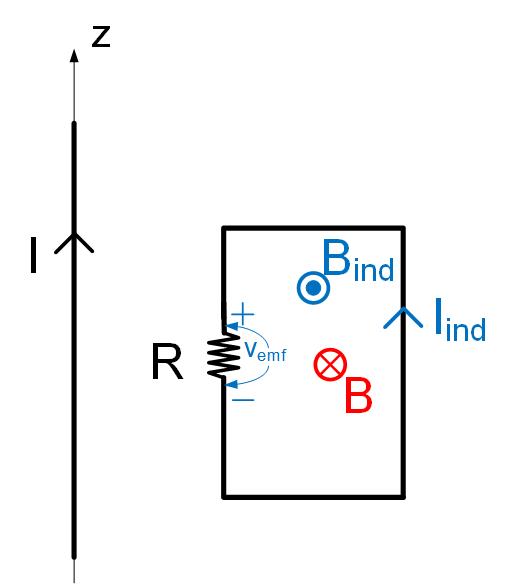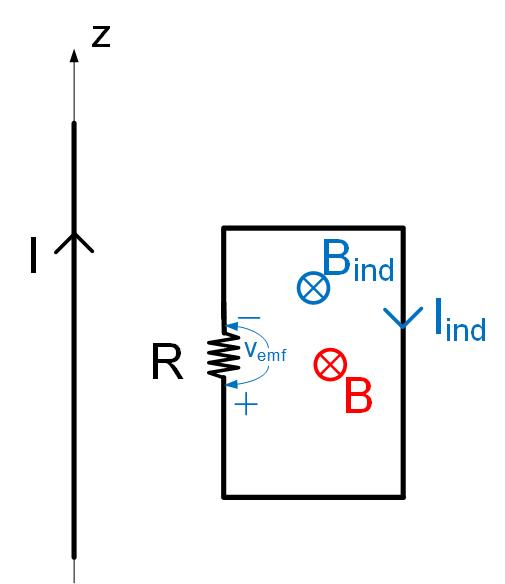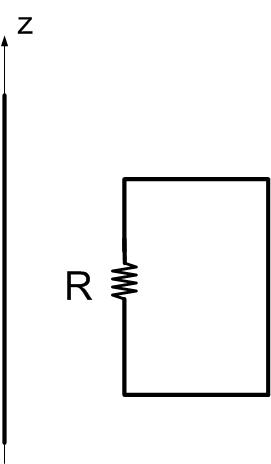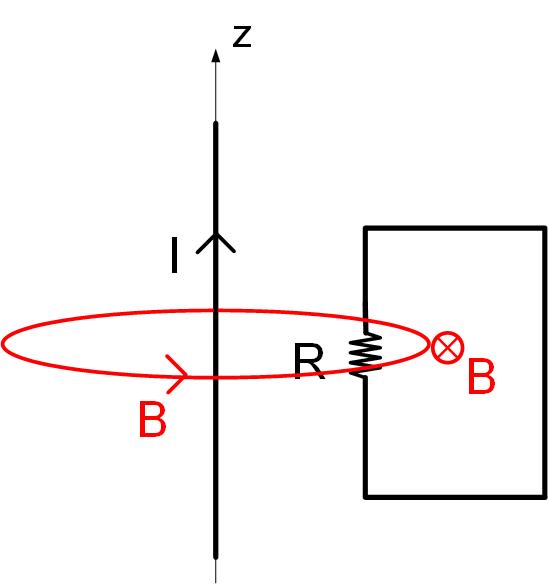Transformer emf polarity and induced current direction are somewhat challenging to find directly from Faraday’s law. However, Lenz’s law gives us a simple way to find the emf polarity and induced current direction.
Lenz’s law states that the induced current will be in such a direction that its induced magnetic field opposes the external magnetic field’s change. We can say that nature dislikes the change of flux.
Example of application of Lenz’s law
An infinite line carries a current I in the positive z-direction. The current increases linearly with time I=t A, where t is time. Determine the direction of the induced current through and the voltage on the resistor R in loop shown in Figure fig:LenzLaw
The magnetic field due to an infinite wire carrying current I is as shown in Figure fig:LenzLaw1. The flux through the loop from the infinite wire’s magnetic field is then directed into the paper.
Since the current is increasing, I=t A, the magnetic field is increasing as well, . Increasing magnetic field will induce a current in the loop so that its direction opposes the increase in the wire’s magnetic field flux. The direction of the countering flux from the loop will then be out of the page, and the current direction will be counter-clockwise (CCW). CCW direction of the current induces positive voltage on the top of the resistor and negative on the bottom, as shown in Figure fig:LenzLaw3.

In the previous problem, if the current in the infinite wire decreases with time, the direction of the induced current, induced magnetic flux density, and induced voltage are shown in Figure fig:LenzLaw2.


